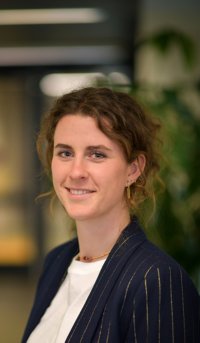Discovery
“After my master’s, a PhD initially seemed the next logical step for me. But a PhD would mean another four years of research, and I really wanted to put my knowledge into practice. I came across a post about the EngD programme on LinkedIn. I visited the 4TU website to find out more and discovered many other interesting vacancies within the EngD programme. That’s how I ended up working where I am now: at Scinvivo."
Better interpretation
"My main project is to further develop Scinvivo’s product, which is an optical coherence tomography (OCT) catheter. Based on reflected light, our catheter creates an image of the bladder wall in very high resolution, to assist in bladder cancer diagnoses. A cross sectional image of the bladder wall can help urologists with decision making.
My role in this is to make the scanned images easier for medical specialists to interpret."
Learning and working
"Combining learning with working really appealed to me. In my daily work, I learn a lot of practical things that are directly related to my knowledge. That works very well after my theory-based studies. Moreover, I have the freedom to spend a week studying something that I can later apply to my project, for example. I don’t have to deliver results every day or contribute to production, like I would in a company. It’s a real mix of learning and working. "

Advantages
"I can highly recommend an EngD. In addition to learning on the job, you build a huge network because you get to know so many people in your field. Besides that, you learn a lot from others, in particular all those things you didn’t learn at university but are very important in practice. And everything you learn directly contributes to your design project.”